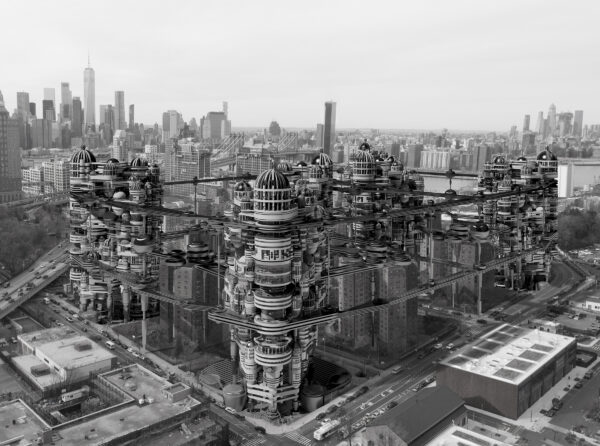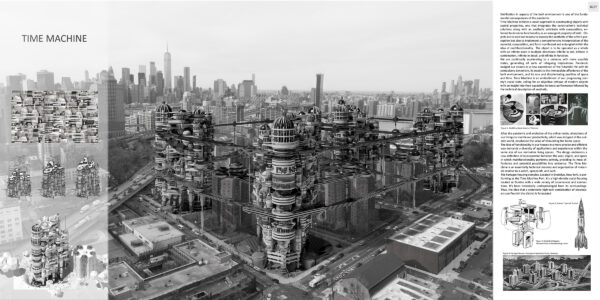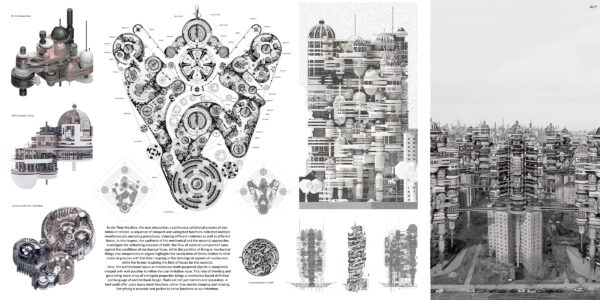Honorable Mention
2021 Skyscraper Competition
Seyed Shervin Hashemi
United States
Debilitation in aspects of the built environment is one of the fundamental consequences of the pandemic.
Time Machine initiates a novel approach to constructing objects with spatial properties, one that integrates the construction’s technical solutions along with an aesthetic solicitude with composition, enforced to immerse functionality as an emergent property of both. Objects are to exist not merely to express the aesthetic of the artist’s perception but also to implement a comprehensive interpretation of the material, composition, and form manifested and entangled within the idea of multifunctionality. The object is to be operated as a whole with an infinite scale in multiple directions: Infinite in size, infinite in combination, infinite in detail, and infinite in function.
We are continually accelerating to a universe with more possible states, generating all sorts of intriguing implications. Pandemic nudged our visions to a new experience of the futuristic life with its compulsory dynamism, its needs to the immaculate affordance of the built environment, and its rare and disorientating qualities of space and time. Time Machine is an embodiment of our progressing society’s social state, calling for an objective critique of modern objects with an insight into their capacities to boost performance followed by the technical description of aesthetic.
After the pandemic and evolution of the online realm, alterations of our livings to mantle our productivity, which was stripped of the outside world, emphasize the value of stimulating the home space.
The idea of functionality in our houses in a more precise and efficient way demands a diversity of applications and experiences within the same size of our normative living spaces. The design endeavors a new definition of incorporation between the user, object, and space in which multifunctionality performs actively, providing its most affordance and potential possibilities into existence. The Time Machine is an essentially technical mastery and organization of materials relative to a watch, spacecraft, and such.
The Farragut Housing complex, Located in Brooklyn, New York, is performing as the Time Machine Port. It’s a high-density social housing located at Dumbo with a wide variety of occurrences and connections. It’s been historically underprivileged from its surroundings. Thus, the idea that a systematic high-tech combination of skyscrapers can flourish the district is forecasted.
In the Time Machine, the user encounters a continuous saltational process of excitation or release: a sequence of compact and variegated functions indicated multiple simultaneously operating procedures, indexing different materials as well as different forces. In this respect, the synthesis of the mechanical and the material approaches investigate the enfeebling excesses of both: the flow of material composition rams against the conditions of mechanical focus, while the partition of living or mechanical things into components or organs highlights the localization of forces relative to their material grounds with the latter reigning in the teleological appeals of mechanism, while the former localizing the field of forces for the material. Here, the architectural layout as mechanical multi-purposed objects is completely merged with wall pooches to refine the size limitation issue. This idea of blending and generating more array of emergent properties brings a mechanical-based definition and language of architectural design. Walls are not just barriers and separators. A bed could offer users many more functions rather than merely sleeping and relaxing. Everything is accurate and packed to serve functions as our intention.

















